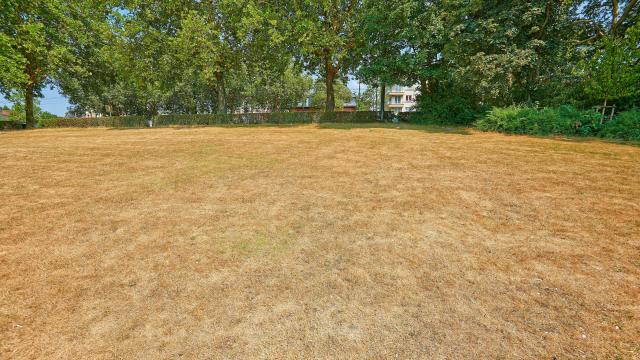The lawn occupies a fascinating niche of Australian culture. The most-grown crop in the country, that patch of grass in your front yard offers nothing of practical value. We remain obsessed with a pretty lawn despite the fact that it’s thirsty, difficult to maintain, and expensive.
Of course, lawns are pretty — if they’re thriving. If you’ve been waging a noble but doomed battle with the elements to establish a beautiful lawn, though, it might be time to cut your losses. The rule of thumb here is pretty simple: If your lawn is only 50 per cent living grass, with the rest being bare dirt, exotic weeds, and the dead husks of grasses past (alternatively, if your lawn is a hodgepodge of different grasses due to past experiments), it’s time to wipe the slate clean and start over.
How to kill a lawn
There are a number of ways to kill off your lawn, each with its own set of upsides and downsides:
Herbicides
The fastest, worst way to kill off your lawn is to go scorched earth and just blast it with herbicides. You want a brand that uses glyphosate for best results, though you should check with a local nursery or gardening expert if you can for expert advice. Be careful not to use any product that promises extended results in terms of weed prevention, as this will ensure your new grass doesn’t grow, either. This will take about two weeks to completely kill your lawn.
Upside: Pretty easy, relatively fast.
Downside: Herbicides are poisons, and indiscriminately spraying poison around your home might not be the greatest idea. May require repeated treatments to totally kill your lawn.
Black plastic
This approach takes a bit longer, but is 100% safe and not terribly labour-intensive. Mow your lawn down as low as you can, then cover it completely with a thick black plastic sheet. Just cover your entire lawn with a few layers of the stuff, stake it to the ground, and…wait.
Upside: Safe and simple.
Downside: A bit slow; it can take up to two months for the lawn to completely die. But slow and steady wins the race.
Clear plastic, water, and sun
An alternative to black plastic is clear plastic. Mow your lawn down to a buzz, soak it in water — like, soak it — and cover with clear plastic. Stake it down, and let the sun cook your lawn to death.
Upside: Completely natural.
Downside: Takes 1-2 months, and relies on having a lot of sunny days.
Horticultural vinegar
This is not the vinegar you keep in your kitchen, which is typically just 5% acetic acid. This stuff is usually about 20% strong, and it is a pretty effective herbicide.
Upside: It’s a popular choice for organic gardeners and folks reluctant to pump poisons into the ground.
Downside: It may not actually kill your lawn’s root system, so renegade grasses and weeds might grow back. It might require repeated treatments — and vinegar can lead to salt buildup in the dirt, making growing your new lawn more difficult.
Sod cutter
Finally, you can go brute force and just tear everything out. Get yourself a sod cutter and tear that lawn up, then have someone haul away the material.
Upside: Thorough. You’ll be removing every remnant of the plants you don’t want. Doesn’t put anything toxic into the ground, either.
Downside: A bit more expensive and labour-intensive, plus you’ll have to find someone to haul away your chopped-out lawn.
Once you’ve killed your lawn and removed all the dead plants, you can set about launching a new campaign with a grass that’s ideal for your environment, and hopefully uses less water.

Leave a Reply
You must be logged in to post a comment.